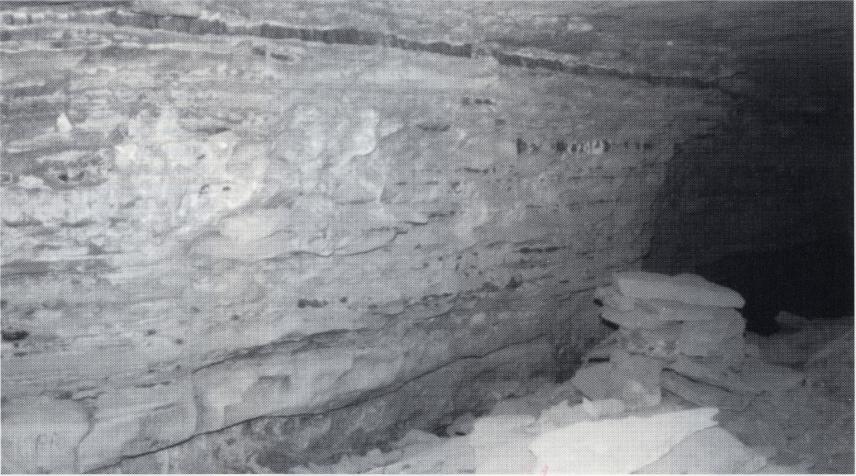James Tharpe, Plainfield, Indiana
Flint is formed by chemical action on minerals that contain a compound of silicon and oxygen called silica. Water dissolves the silica out of the minerals to produce a substance that resembles opal. The water in the substance then filters out, forming flint.
Flint varies in color from brown to dark gray to black. It is a form of chalcedony that consists of tiny crystals of quartz with extremely small pores. In most cases, flint occurs as small nodular balls or veins (tabular) embedded in such rock as chalk or limestone. Lighter colored deposits that occur as continuous layers are called chert.
Is flint also chert? Yes, flint could be considered chert; however flint contains a higher quality of chalcedony. Chert resembles flint; however chert consists of cryptocrystalline (having a crystalline structure so fine that no distinct particles are recognizable under the microscope) quartz or fibrous chalcedony. The key definition of chert is “crystals that are fibrous” and flint is “crystals that are extremely small and porous.”

Nodule and core made from Harrison County flint found on an Indian camp site in 1965 by James Tharpe.
Other Minerals Used in place
of Flint and Chert
Chalcedony: A likeness to quartz that has the luster of wax and is variously colored, usually grayish or milky. It comprises onyx, agate, sard, jasper cat’s-eye, carnelian, and chrysoprase.
Sard: A very hard deep orange-red variety of chalcedony classed by a variety of carnelian.
Carnelian: A red variety of chalcedony, a hard tough chalcedony that has a reddish color.
Chrysoprase: A light green variety of chalcedony sometimes used as a semiprecious stone.
Agate: A variety of chalcedony, with a fine-grained variegation of colors arranged in stripes and blended in clouded coloring or showing mosslike forms.
Crystal: A clear transparent quartz.
These examples of materials contain a crystal base, although they take on different characteristics. Their qualities, similar to a durable and fine grained flint, make them the most commonly sought after stone needed in tool manufacturing.
Prehistoric man knew the quality a stone would produce during the manufacturing of a much-needed item and he quarried areas that produced the mineral. This mineral was traded for their much-needed items to other prehistoric settlers. A stone could be traded miles away from the original quarried location.
References
Webster’s Dictionary of the American Language, Chemical definition of flint and chert.
Field Guide provided at Wyandotte Cave, Flint formation.

Wyandotte Cave showing veins of flint in the cave walls. Wyandotte flint is commonly known as Harrison County flint to artifact collectors.
